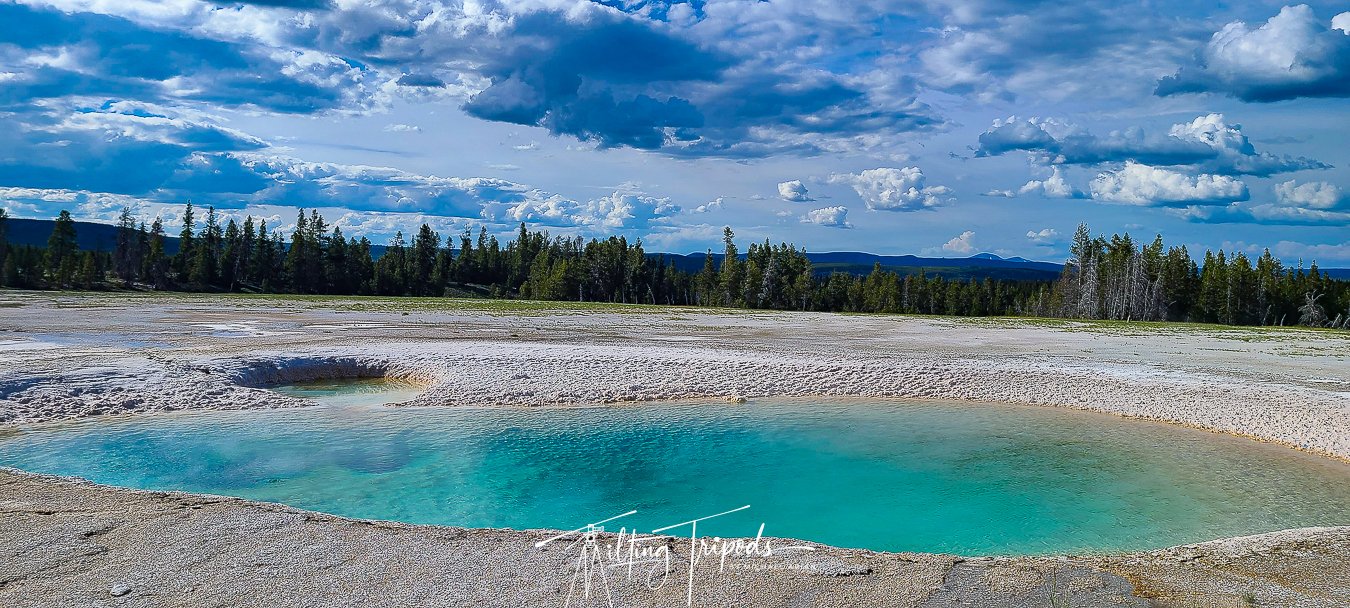
The Greater Yellowstone Ecosystem
About The Greater Yellowstone Ecosystem
The Greater Yellowstone Ecosystem (GYE) is one of the last nearly intact temperate ecosystems on Earth — a living tapestry of mountains, rivers, forests, and wildlife on a scale that’s hard to comprehend. Spanning more than 22 million acres across Wyoming, Montana, and Idaho, the GYE is roughly 22 times larger than the state of Rhode Island and over 2 million acres larger than South Carolina. It is, quite simply, one of the wildest places left in the lower 48.
While Yellowstone and Grand Teton National Parks are its most well-known icons, they are just the beginning. The GYE also includes five national forests, three national wildlife refuges, and a mosaic of public and private lands. (Custer Gallatin National Forest, Beaverhead-Deerlodge National Forest, Caribou-Targhee National Forest, Bridger-Teton National Forest, and Shoshone National Forest) and three other federal areas protected by the US Fish and Wildlife Service (National Elk Refuge, Red Rock Lakes, and Grays Lake National Wildlife Refuge). Over 90% of the land within the ecosystem lies outside the borders of the two parks — and that’s where some of the most urgent conservation challenges live.
A Complex and Vital Ecosystem
The GYE straddles the Continental Divide and forms the headwaters of seven major rivers, sending snowmelt and rainwater across the West — all the way to the Pacific Ocean and the Gulf of Mexico. These waterways are lifelines for fish and wildlife, for recreation, for agriculture, and for communities downstream.
The terrain here ranges from high alpine peaks to sagebrush steppe and grasslands, from volcanic plateaus to geothermal marvels like geysers and hot springs. Yellowstone Lake, the Lamar and Madison Rivers, Grand Teton’s jagged peaks — it is a landscape of extremes and beauty, always in motion.
Wildlife Like Nowhere Else
The GYE is a rare stronghold for some of North America’s most iconic and misunderstood animals. It’s the only place in the lower 48 states where grizzly bears, black bears, and gray wolves still roam in significant numbers.
Grizzly Bears: Once nearly extinct, over 1,000 grizzlies now live in the GYE. But only a small portion — around 150–200 — live inside Yellowstone. The rest exist beyond the park’s boundaries, navigating a patchwork of jurisdictions and pressures, with far fewer protections.
Wolves: After being eradicated in the early 20th century, wolves were reintroduced to Yellowstone in 1995. Today, a population of around 100 lives in and around the park, having profoundly reshaped the ecosystem.
Other Wildlife: This region also supports herds of thousands of bison and pronghorn, moose, elk, deer, coyotes, otters, foxes, eagles, and more — creating one of the most complete large-mammal assemblages in the United States.
More Than a Park
The Greater Yellowstone Ecosystem is not just a place on the map — it’s a symbol of what's still possible. But it is also a test. Most of the animals we admire cross invisible boundaries that offer different rules, protections, and threats. What happens beyond those lines — in the forests, on the ranches, and in the legislatures — will determine the future of this place.
At Tilting Tripods, we believe the GYE tells a story that’s far bigger than any one bear, wolf, or park. It is the story of what wild still means — and whether we’re willing to protect it.
Stay Up To Date: Subscribe To The Wildline Dispatch
The Wildline Dispatch is our field-to-inbox newsletter — delivering powerful stories, behind-the-scenes updates, and real ways to protect what’s wild.
